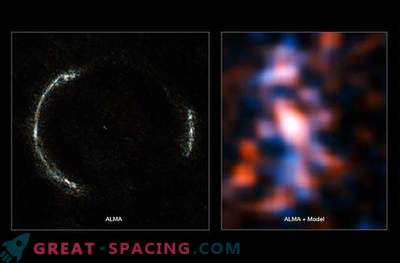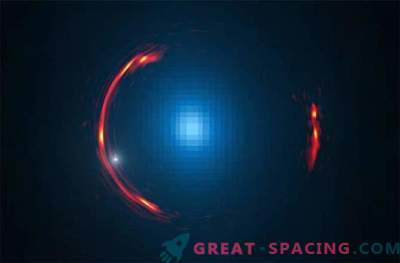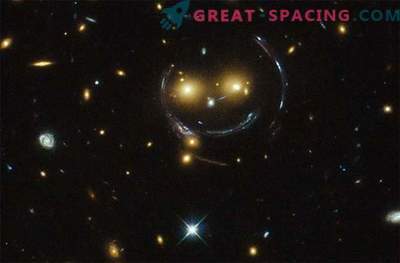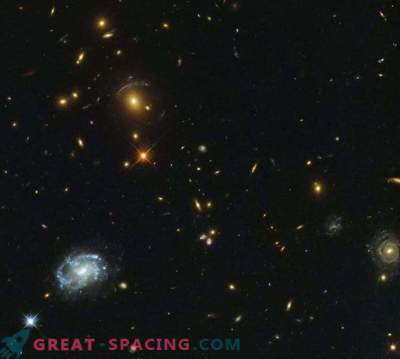
This is one of the finest examples of the Einstein ring found to date, but it was not opened by the Hubble Space Telescope, but by the most powerful ground-based observatory ALMA.
Located in the Atacama Desert (Chile), the Atakam Large Millimeter / Submillimeter Grid has recently begun its work, and astronomers are beginning to realize its powerful potential.
As part of the observation program on the ALMA telescope using long bases, which was carried out at the end of 2014, this ancient galaxy was spotted. Twisted by a massive galaxy in front of it, the light from the ancient galaxy called “SDP.81” (which was formed when the age of the Universe was only 15% of the current) was refracted by space-time.
Gravitational lenses, known from Hubble’s observations, are quite common and occur when distant light sources are deformed around massive objects, such as clusters of galaxies. If the light source is in line with the gravitational lens, the latter surrounds the object like a ring, known as the Einstein ring. More recently, Hubble's powerful optics have been “enhanced” with these natural lenses, helping us look even further into space. This project was named “Frontier Fields”. It is thanks to him that we can get a unique look at galaxies that would otherwise be out of sight of even the most powerful telescope.
But this almost perfect ring was not discovered by Hubble. Thanks to the increased resolution of ALMA, we can see the details of this young star-forming galaxy.
The advantage of using long bases (for example, ALMA) is that individual antennas can be located far from each other, simulating a collecting area. In other words, ALMA simulates a telescope with a diameter of 15 kilometers, increasing the potential of astronomical observations.
We remind you that on our site you can see and evaluate the location of ALMA: https://v-kosmose.com/cosmos/alma/index.html











































